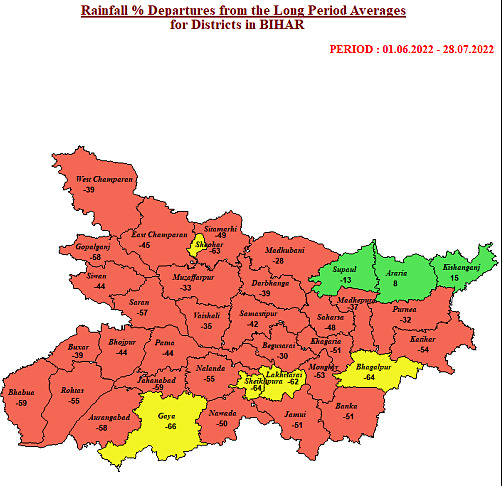
views
Sapped because of the lowest-ever rains recorded in July in the last 122 years, there is bad news for the rice-sowing farmers of Uttar Pradesh, Bihar, Jharkhand, and Gangetic West Bengal. According to the India Meteorological Department (IMD), the rainfall is likely to be normal to below normal for the region over the next two months.
“As far as the IMD forecast is concerned, below normal rainfall is likely over many parts of the west coast, and some parts of east central, east and north-east India. East UP, Jharkhand, and West Bengal may still see near normal rains in August, but the projections do not look very encouraging for Bihar, which is likely to be most affected,” said IMD’s director general of meteorology M Mohapatra.
While the monsoon rainfall across the country has so far been 8 per cent above normal, east and north-east India has been facing a dry monsoon season, with a deficiency of up to 16 per cent so far. The rainfall in July was particularly low at nearly 44 per cent below normal, which is the lowest in the last 122 years. The last time the region faced such poor July rains was in 1903.
The long dry spells have pushed the region into a drought-like situation which could have a serious impact on the paddy-sowing farmers. Until July 28, Bihar had received only 278 mm rainfall against the normal of 474 mm, with a staggering deficit of 41 per cent. In Jharkhand, the deficiency is close to 50 per cent, with largely scanty rains in ten districts.

According to meteorologists, the subpar monsoon season is in sync with the long-term trends, which indicate a decreasing rainfall scenario for the east and north-eastern states. “We have analysed the data and found that eastern states are getting less rain. There is a negative trend, especially for certain pockets. It is not very high, but it is significant,” said Mohapatra.
Second-highest July rains for country as a whole
On the other hand, the rainfall over the country as a whole was the second highest after 2005 since 1998, with the monsoon rainfall at 8 per cent above normal on July 31. The forecast also predicts that the country is likely to witness normal to above-normal rains over the next two months. The rainfall is likely to be good over most parts of southeast India, northwest, and west-central India in August, stated the IMD.

“We normally witness three low-pressure systems in July and roughly 14 days when these low-pressure systems remain active. However, this time, we saw as many as four low-pressure systems, out of which the last two lasted much longer. Overall there were 21 low-pressure-system days in the whole month, which explains the above-normal rains,” said Mohapatra.

Normal rains for India
Except for the east-central and eastern states, the country as a whole is likely to see normal rains – 94-106 per cent of the long period average (LPA). The prevailing La Nina conditions (sea surface temperatures over equatorial Pacific) which are expected to last till year-end will favour good rains, as per the IMD.
Read all the Latest News and Breaking News here



















Comments
0 comment